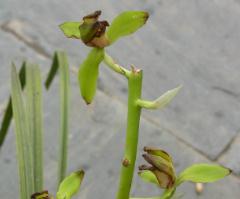Gerbera gerbera cultivation and maintenance method
Gerbera is also called gerbera, breviscapus, autumn English, Persian flower, Chinese name of gerbera: Chinese name of gerbera family: Compositae is a perennial herb.
Gerbera flowers like to grow in a mild winter and cool summer environment. The optimum temperature is 15-25°C, and if it is lower than 7°C, the leaves will turn yellow. In Jiangnan area, if you can pay attention to cold winter, most of them can be put into production. But this flowerI am most afraid of wind and rain. It is difficult to guarantee the quality of the product if it is cultivated in the open field. Therefore, protection measures must be taken for mass production, and plastic greenhouse cultivation can be used to obtain the ideal yield.
gerbera flowerReproductionMethod
There are two ways to reproduce Gerbera:
One is sowing. Usually each flower can bear 20 or 30 seeds, which can be sown in spring or autumn.
The second method is to use the ramification method. Take out the seedlings that grow next to the mother plant. It is best to dig a hole for planting every two plants, which is beneficial to increase the number of flowering. As for places where conditions permit, it isSpeeding up breeding and promotion of improved varieties will be more beneficial.
The root system of Gerbera is relatively developed, the main root is longer, and the lateral roots are also many. When planting, you should choose a slightly acidic sandy loam with good drainage, after deep ploughing and finely crushing, and planting with a raised border. Each border is planted in two rows with a row spacing of 35~ 40 cm, the plant spacing should be 30 cm, so that the density is moderate, can prevent the leaves from covering each other, more sure about flowering.
Due to the flowering habit of "relay race", the first bud of the gerbera flower comes out first, and the other bud comes in contact with the pupil. Each year, it can produce about 50,000 to 60,000 fresh cut flowers per mu, with more than 80,000.There is a great demand for nutrients. Therefore, organic fertilizers such as human and animal manure and urine must be applied 2 to 3 times a month, plant ash once, and a small amount of bean cake or peanut drums shall be applied to supplement the physical consumption of flowering.
In addition, some sulfur powder should be sprinkled on the border surface every season to prevent the spread of mildew and infection.
- Related knowledge
- Can gerbera be kept at home? Is it unlucky?
- How to reproduce gerbera ramets, sowing, cuttings
- Maintenance method of gerbera flower arrangement
- Gerbera sowing time with information
- How to raise gerbera experience
- How to raise gerbera
- Plants that bloom first and then grow leaves
- The breeding method of Huaye Biantianzhang
- How to cut dahlias
- The breeding method of Shishijinjin
- Knowledge and treatment method of flower slow seedling period
- Brazilian wood breeding and maintenance method
- What is the key to survival of grafting?
- How to perform meristem reproduction?
- Key points of cultivation and maintenance of African violets
 How to save flowers after wilting?
How to save flowers after wilting?- Beauty Flower Winter Red Camellia cultivation and maintenance method
- Gerbera gerbera cultivation and maintenance method
- How to measure and change the pH of the culture soil?
- Editor's recommendation
- The breeding method of keel flower
- How to grow cosmos
- Brazilian wood breeding and maintenance method
- Cultivation and management of open field flowers
- Maintenance method of torch flower
- How to raise hyacinth after flowering
- How to maintain crab claw orchid in winter
- How to make hummus?
- The use of aspirin in floriculture
- Domestic jasmine needs Siqin

